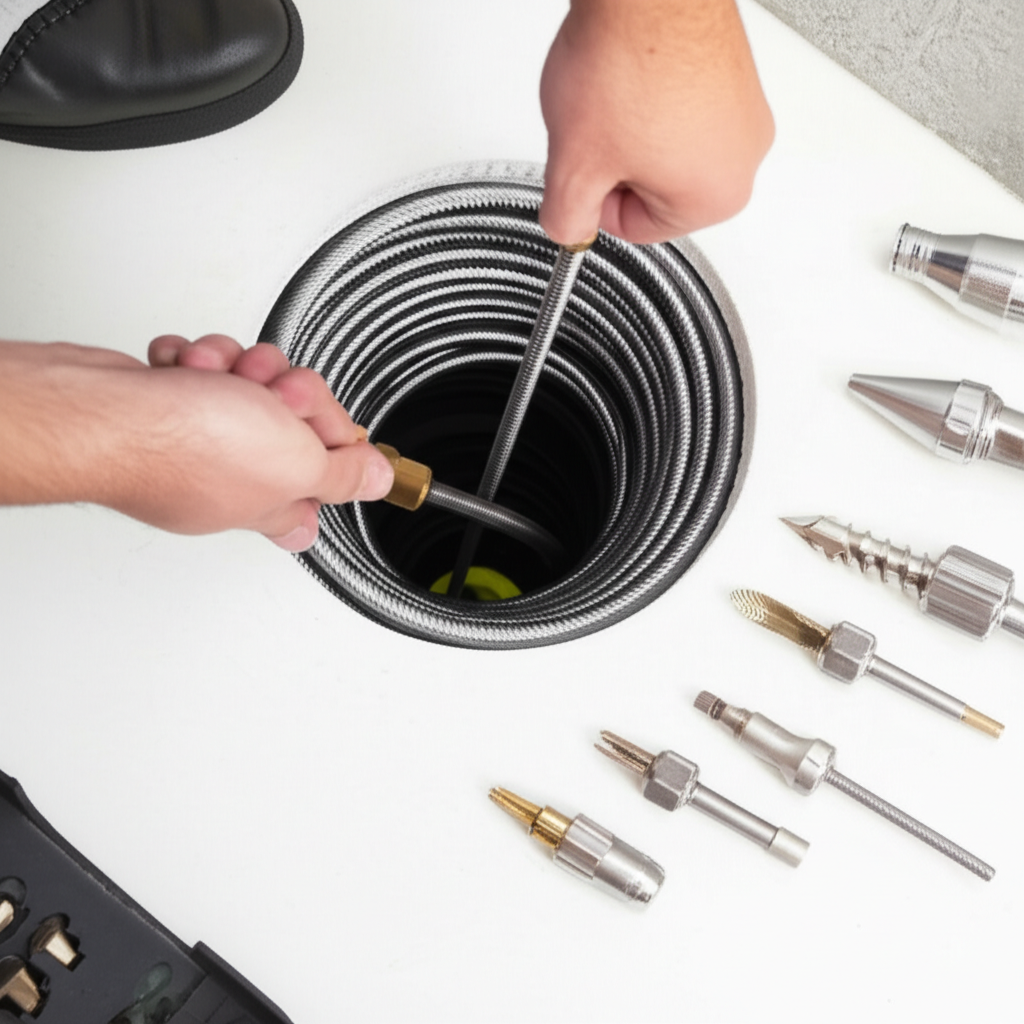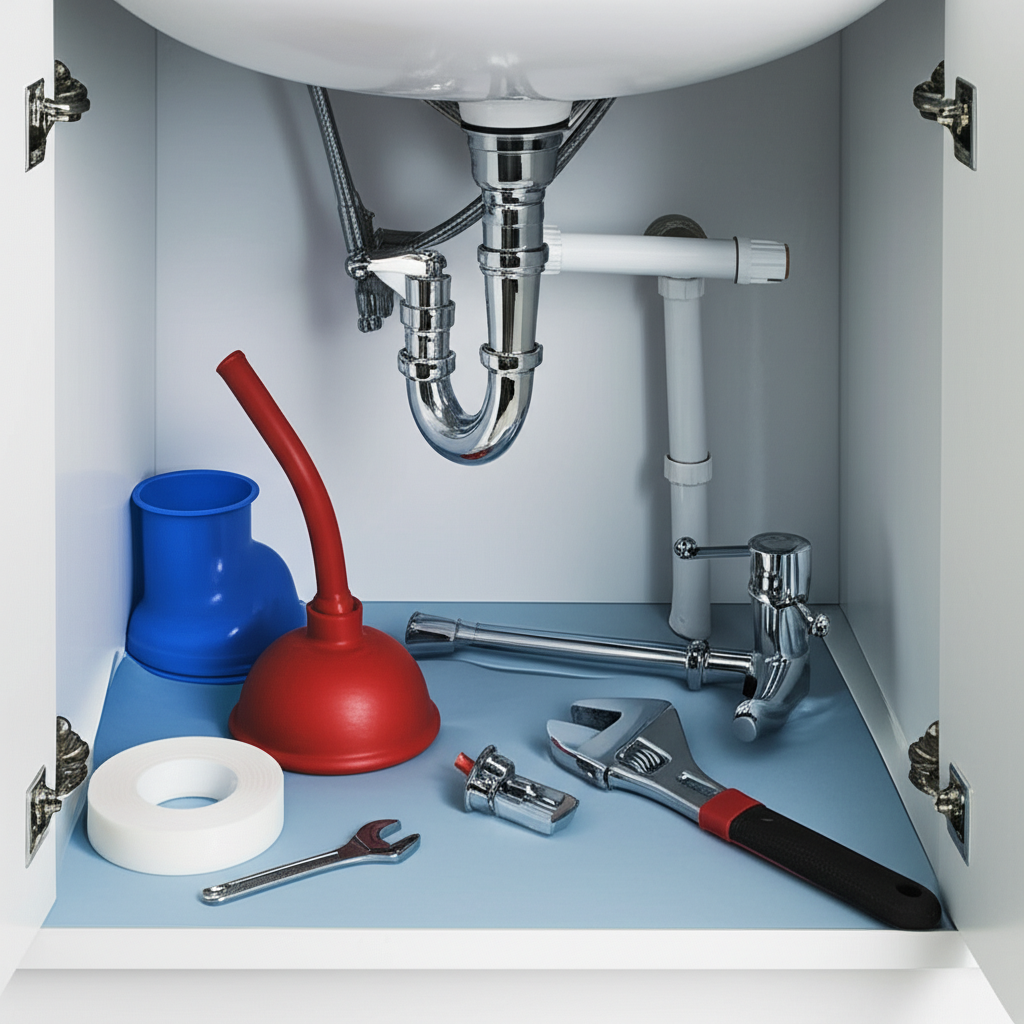25 Proven Ways to Master Your Plumbing Auger
That gurgling sink or slow-draining shower can be frustrating! Clogs happen to everyone. Luckily, a plumbing auger, also known as a drain snake, is a powerful tool for clearing them. But using it correctly is key to success and avoiding bigger problems.
Don’t worry if you’ve never used one before. This guide will walk you through everything you need to know. We’ll cover choosing the right auger, using it safely, and a few handy tips to make you a pro!
Why a Plumbing Auger is Your Clog-Busting Friend

A plumbing auger is like a flexible metal tape measure with a corkscrew tip. You feed it into a drain pipe. When it hits a clog, the rotating tip can break it up or grab onto it so you can pull it out.
It’s a much gentler approach than harsh chemicals. Plus, it can reach deeper clogs that a plunger might miss. Mastering this tool can save you time, money, and a lot of plumbing headaches.
Choosing the Right Plumbing Auger
Not all augers are created equal. Here’s a look at common types and when to use them:
| Auger Type | Best For | Pros | Cons |
|---|---|---|---|
| Toilet Auger (Closet Auger) | Toilets, tight curves | Protects porcelain, flexible shaft | Shorter reach, can be bulky |
| Sink/Tub Auger (Closet Auger) | Sinks, tubs, showers, P-traps | More flexible, longer reach than toilet augers | Can kink if not handled carefully |
| Drum Auger (Hand-Crank) | Various drains, longer distances | Easy to use, self-feeding mechanism | Can be heavy, limited by cable length |
| Electric Drain Auger | Tougher clogs, longer pipes | Powerful, fast clearing | Requires electricity, higher cost, can damage pipes if misused |
Essential Tools and Safety Gear
Before you start, gather these items to make the job smoother and safer:
- Your Plumbing Auger: Choose the right type for your clog.
- Gloves: Protect your hands from dirt and germs.
- Eye Protection: Safety glasses are a must to prevent splashes.
- Bucket or Towels: To catch any mess.
- Rag or Old Towel: For wiping the auger cable.
- Work Clothes: Old clothes you don’t mind getting dirty is best.
25 Proven Ways to Master Your Plumbing Auger
Let’s get to it! Here are 25 tips to help you master your plumbing auger like a pro:
Preparation is Key
- Identify the Clogged Drain: Make sure you know exactly which drain is the problem. Sometimes multiple drains seem slow, but only one is truly blocked.
- Clear the Area: Remove any items from around the sink, toilet, or tub. This gives you plenty of room to work.
- Protect Your Surfaces: Lay down old towels or a drop cloth around the drain to catch any drips or splatters.
- Read the Auger’s Manual: If your auger came with instructions, give them a quick look. Every model can have slightly different features.
- Choose the Right Auger for the Job: As we discussed, using a toilet auger for a toilet and a sink auger for a sink is important for efficiency and to prevent damage.
Getting Started with the Auger
- Insert the Auger Carefully: Gently feed the auger cable into the drain opening. For toilets, use the rubber boot of the toilet auger to prevent scratching the porcelain.
- Push Until Resistance: Continue pushing the cable into the drain until you start to feel some resistance. This means the auger has likely reached the clog.
- Lock the Cable: Most augers have a locking screw. Once you feel resistance, tighten this screw to hold the cable in place. This allows you to crank the handle.
- Start Cranking Slowly: Begin turning the handle in a clockwise direction. This rotates the auger head as it penetrates the clog.
- Apply Gentle Pressure: Don’t force the auger. Let the rotating tip do the work. If you meet hard resistance, you might be going around a bend, or hitting a very stubborn clog.
Working Through the Clog
- Feel for the Clog: As you crank, you should feel a change in resistance when you hit the clog. The auger might get stuck or feel like it’s grinding.
- Break Up or Hook the Clog: Once you feel the clog, keep cranking. If the clog is soft, the auger head should break it up. If it’s more solid, the auger might hook onto it.
- Retrieve the Clog (If Possible): If you feel you’ve hooked something, try to pull the cable back out slowly while still holding the crank. You might pull out the debris.
- Pull and Retract Sections: If you don’t pull out the debris, retract about a foot of cable. Then, push it in again, cranking as you go. This can help break up stubborn clogs.
- Clear Debris from the Auger: If you successfully retrieve debris, clean it off the auger head before reinserting it. Use a rag or old towel.
Advanced Techniques and Troubleshooting
- Advance in Stages: For longer drains, you might need to insert, crank, retract, and re-insert several times. This ensures you’re reaching the full length of the clog.
- Listen to Your Auger: You’ll feel resistance through the handle. A sudden give might mean you’ve broken through. A constant grating sound means you’re working on the clog.
- Dealing with Multiple Bends: Pipes often have bends. If you hit resistance and can’t push further, try rotating the auger slightly and pushing again. This helps navigate bends.
- Know When to Stop: If you’ve tried for a significant amount of time and can’t clear the clog, or if you suspect you might be damaging the pipe, it’s time to stop.
- Flush the Drain: Once you believe the clog is cleared, run hot water down the drain for several minutes to flush out any remaining debris and test the flow.
Maintenance and Aftercare
- Clean the Auger Thoroughly: After each use, clean the auger cable and drum with water. This prevents rust and keeps it in good working order.
- Dry the Auger: Make sure the cable is completely dry before storing it. Moisture can lead to corrosion.
- Lubricate the Cable: A light coating of lubricant (like WD-40) can help protect the metal cable from rust and make it easier to feed next time. Check your auger’s manual for specific recommendations.
- Store it Properly: Keep your auger in a dry place, away from extreme temperatures.
- Regular Drain Maintenance: To prevent future clogs, consider using a drain cover to catch hair and debris. Regular flushing with hot water can also help. You can also learn more about basic plumbing maintenance from reputable sources like the Federal Trade Commission.
Troubleshooting Common Auger Issues
Sometimes, things don’t go perfectly. Here’s how to handle common problems:
| Problem | Likely Cause | Solution |
|---|---|---|
| Auger won’t go in | A tight bend in the pipe; a very dense clog right at the opening. | Try rotating the auger gently as you push. If it’s a dense clog at the opening, sometimes a plunger can break it up enough to start feeding the auger. |
| Cable is stuck and won’t turn or retract | The auger head has latched onto something immovable, or the cable has kinked. | Try to gently pull back on the cable while turning the crank in the opposite direction (counter-clockwise). Never force it, as this can break the cable. If it’s a kink, you may need to retract slowly and try to straighten the pipe run if accessible (though this is rare for DIYers). |
| Auger spins but doesn’t clear the clog | The clog is too soft or too far away for the auger head to effectively break it up or grab it. | Ensure the locking screw is tight. Try advancing and retracting in short bursts. If it continues to spin without effect, you may need a different type of auger or professional help. |
| Water still drains slowly after using the auger | The clog wasn’t fully cleared; there was secondary buildup. | Repeat the auger process. Try flushing with hot water and a bit of dish soap. If slow drainage persists, the clog might be further down the line or a more serious issue. |
When to Call a Professional Plumber
While a plumbing auger is a fantastic DIY tool, there are times when it’s best to call in the experts:
- Persistent Clogs: If you’ve tried multiple times with the auger and the drain is still clogged, the blockage might be too severe or too far down the pipe for your auger to reach.
- Recurring Clogs: If this isn’t the first time a drain has clogged, there might be an underlying issue like pipe damage, a tree root intrusion, or improper pipe slope that needs professional assessment. You can learn more about pipe conditions from resources like EPA’s WaterSense program.
- Multiple Fixtures Clogged: If several drains in your home are backing up, it usually indicates a problem with the main sewer line, which requires professional equipment and expertise.
- You’re Uncomfortable or Unsure: Plumbing can be tricky. If at any point you feel uncomfortable, unsure, or fear you might cause damage, don’t hesitate to call a licensed plumber.
- Suspected Pipe Damage: If you believe your pipes may be damaged, corroded, or blocked by something unusual, a professional has the tools and knowledge to diagnose and repair it safely.
Frequently Asked Questions (FAQs)
Can I use a plumbing auger on any clog?
Plumbing augers are very effective for most common clogs like hair, grease, and food debris. However, they might struggle with extremely dense clogs, massive foreign objects, or issues deep within the main sewer line.
How do I know if I’ve cleared the clog?
The best way to tell is by running water down the drain. If the water flows freely and rapidly, you’ve likely cleared the blockage. If it still drains slowly or gurgles, the clog may still be present or only partially cleared.
What’s the difference between a drain auger and a toilet auger?
A toilet auger (or closet auger) is specifically designed with a protective sleeve and a shorter, stiffer cable to navigate the P-trap of a toilet without scratching the porcelain. A sink/tub auger is generally longer and more flexible, suitable for other drains.
Can using an auger damage my pipes?
While generally safe when used correctly, excessive force or aggressive maneuvering, especially with electric augers, can potentially damage older or weakened pipes. Always follow the gentle, step-by-step approach outlined above and never force the auger.
How far into the drain should I push the auger?
You should push the auger cable into the drain until you feel significant resistance, which indicates you’ve reached the clog. If you’re unsure, push until the cable is fully extended or you hit a point where it cannot be advanced further without excessive force.
Should I use chemicals before or after an auger?
It’s generally not recommended to use chemical drain cleaners before or after using a plumbing auger. Chemical clogs can splash out and cause burns if they come into contact with skin or eyes. Augers are a mechanical solution that bypasses the need for harsh chemicals.
Bringing It All Together
Mastering your plumbing auger might seem daunting at first, but with a little practice and by following these proven steps, you’ll be tackling clogs with confidence. Remember, preparation, careful operation, and patience are your best tools.
By understanding the different types of augers, using the right safety gear, and applying the techniques shared here, you can effectively clear many common drain blockages. Don’t be afraid to try, but always know when to call a professional if a problem is beyond your comfort level or capabilities.
Happy unclogging!

